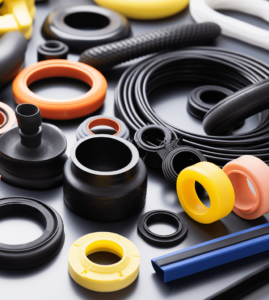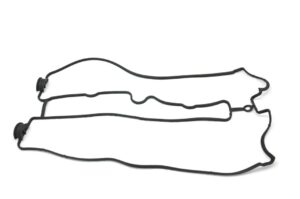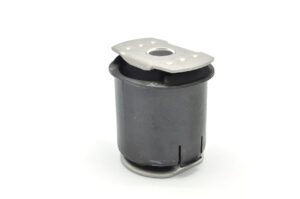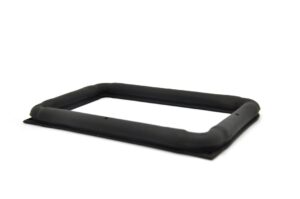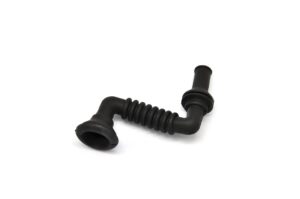Description
EPDM Rubber Hose
EPDM Rubber Hose: Durability, Flexibility, and Versatility for Industrial and Automotive Applications
EPDM rubber hoses (Ethylene Propylene Diene Monomer) are one of the most widely used types of hoses in various industries due to their excellent performance characteristics, including high-temperature resistance, weather resistance, and flexibility. These hoses are essential for applications in automotive systems, industrial machinery, HVAC systems, and more. EPDM hoses are highly versatile and offer long-lasting reliability even in harsh environments.
What is EPDM Rubber?
EPDM rubber is a synthetic elastomer composed of ethylene, propylene, and diene monomers. This combination of materials gives EPDM rubber its unique properties, including excellent resistance to ozone, UV light, extreme temperatures, and chemical corrosion. EPDM rubber is also known for its flexibility and low compression set, meaning it retains its shape and functionality under stress and pressure.
As a result, EPDM rubber hoses are ideal for applications where the hose needs to withstand harsh environmental conditions and chemical exposure while maintaining flexibility and durability.
Key Applications of EPDM Rubber Hoses
- Automotive Industry
- Coolant Hoses: EPDM hoses are commonly used in automotive cooling systems, including radiator hoses and heater hoses. Their resistance to high temperatures and chemicals (such as antifreeze and coolant) ensures long-lasting performance.
- Air Conditioning: EPDM rubber is used in HVAC systems and air conditioning hoses due to its excellent ability to handle extreme temperatures and resist UV damage.
- Fuel Hoses: EPDM rubber hoses are also used in fuel lines in certain vehicles, especially for non-pressurized systems, due to their chemical resistance.
- Industrial Applications
- Water and Air Supply Lines: EPDM rubber hoses are commonly used in industrial environments for water transfer and compressed air systems. They can handle exposure to water, chemicals, and a range of working temperatures, making them versatile for industries like manufacturing, construction, and mining.
- Chemical Processing: EPDM hoses are resistant to many acids, bases, and solvents, making them ideal for use in chemical processing plants. The hoses are used for transferring chemicals, acids, and other harsh materials.
- Fire Fighting: EPDM hoses are used in fire hose applications due to their ability to withstand extreme temperatures, making them essential for firefighting systems in industrial and commercial settings.
- Agricultural Applications
- Irrigation Systems: EPDM rubber hoses are widely used in agricultural irrigation systems because of their resistance to UV radiation and ozone. They can also handle exposure to fertilizers and pesticides without degrading.
- Farm Equipment: EPDM hoses are used in various types of farm machinery, including irrigation pumps, fertilizer sprayers, and water systems, due to their robustness and long lifespan.
- HVAC (Heating, Ventilation, and Air Conditioning)
- Air Ducts: EPDM hoses are commonly used in HVAC systems for air ducts and ventilation lines, where they ensure efficient airflow while resisting the elements that could degrade other materials.
- Chilled Water Lines: Due to their low-temperature resistance, EPDM hoses are used in chilled water lines in large buildings, factories, and warehouses that have HVAC or refrigeration systems.
- Marine and Outdoor Applications
- Marine Hose Systems: EPDM rubber hoses are highly resistant to the corrosive effects of saltwater, making them suitable for marine applications, such as fuel lines, bilge pump hoses, and water intake hoses for boats and ships.
- Outdoor Use: EPDM hoses are also used in outdoor equipment, such as garden hoses, pressure washers, and landscape irrigation, due to their UV resistance and ability to perform well in extreme weather conditions.
Benefits of EPDM Rubber Hoses
- High-Temperature Resistance
EPDM rubber can withstand a wide range of temperatures, typically ranging from -40°C to 150°C (-40°F to 302°F), making it suitable for both cold and hot applications. This is particularly useful in automotive and industrial applications that experience frequent temperature fluctuations. - UV and Ozone Resistance
EPDM hoses are highly resistant to UV radiation and ozone, which means they won’t degrade or crack when exposed to sunlight and environmental conditions. This makes them ideal for outdoor and marine applications. - Excellent Flexibility
EPDM rubber hoses are known for their flexibility, which makes them easy to install and maneuver in tight spaces. They retain their flexibility even at low temperatures, which is important in applications such as automotive cooling systems and irrigation lines. - Chemical Resistance
EPDM hoses have excellent chemical resistance to a variety of substances, including alkalies, acids, and alcohols. This makes them suitable for use in chemical processing, water treatment, and food production industries where exposure to chemicals is common. - Durability
EPDM rubber hoses are abrasion-resistant, making them durable even under heavy use. They can withstand rough handling, physical wear, and environmental factors like sunlight, rain, and saltwater. - Low Maintenance
Due to their durability and resistance to weathering and wear, EPDM rubber hoses require minimal maintenance, reducing the need for frequent replacements and repairs. - Cost-Effective
While providing premium performance, EPDM rubber hoses are cost-effective compared to other materials like silicone or fluoropolymer hoses, offering a high return on investment.
Common Specifications of EPDM Rubber Hoses
- Diameter and Length:
EPDM rubber hoses come in various diameters, ranging from small hoses for specific applications (e.g., fuel lines or hydraulic systems) to larger hoses for high-volume fluid transport (e.g., industrial water hoses). The length of the hose can be customized based on the user’s requirements. - Pressure Rating:
EPDM hoses come in low to high-pressure options. The pressure rating will vary depending on the application and intended use. Industrial and automotive applications often require high-pressure ratings to handle the demanding needs of their systems. - Temperature Rating:
EPDM rubber hoses typically have a temperature resistance range of -40°C to +150°C. Custom formulations may extend this range further, depending on the specific needs of an application. - Reinforcement Options:
EPDM hoses can be reinforced with materials like braided steel, textile fabric, or spiral wire to improve strength and pressure resistance, especially in high-pressure or abrasion-prone environments.
Why Choose Julong Rubber for EPDM Rubber Hoses?
At Julong Rubber, we specialize in providing high-quality EPDM rubber hoses for a wide range of applications. Whether you need hoses for automotive systems, industrial machinery, marine environments, or agriculture, our EPDM hoses are designed to meet the highest standards of quality, performance, and durability.
Key Benefits of Choosing Julong Rubber EPDM Rubber Hoses:
- Custom Solutions
We offer custom-designed hoses tailored to your specific needs, including custom lengths, diameters, and pressure ratings. - Premium Materials
Our EPDM hoses are made from the finest quality EPDM rubber, ensuring superior performance in extreme temperatures, UV conditions, and harsh chemicals. - Long-Lasting Durability
With abrasion resistance, chemical resistance, and low maintenance, our hoses are built to provide reliable service over time. - Competitive Pricing
We provide cost-effective solutions without compromising on quality, ensuring you get the best value for your investment. - Reliable Delivery
With our efficient production processes, we guarantee on-time delivery for all orders.
Choose Julong Rubber for high-performance EPDM rubber hoses that deliver the durability, flexibility, and chemical resistance needed for your applications. Reach out today for a quote or consultation!
Let me know if you need more specific details about EPDM rubber hoses or any other related products!













